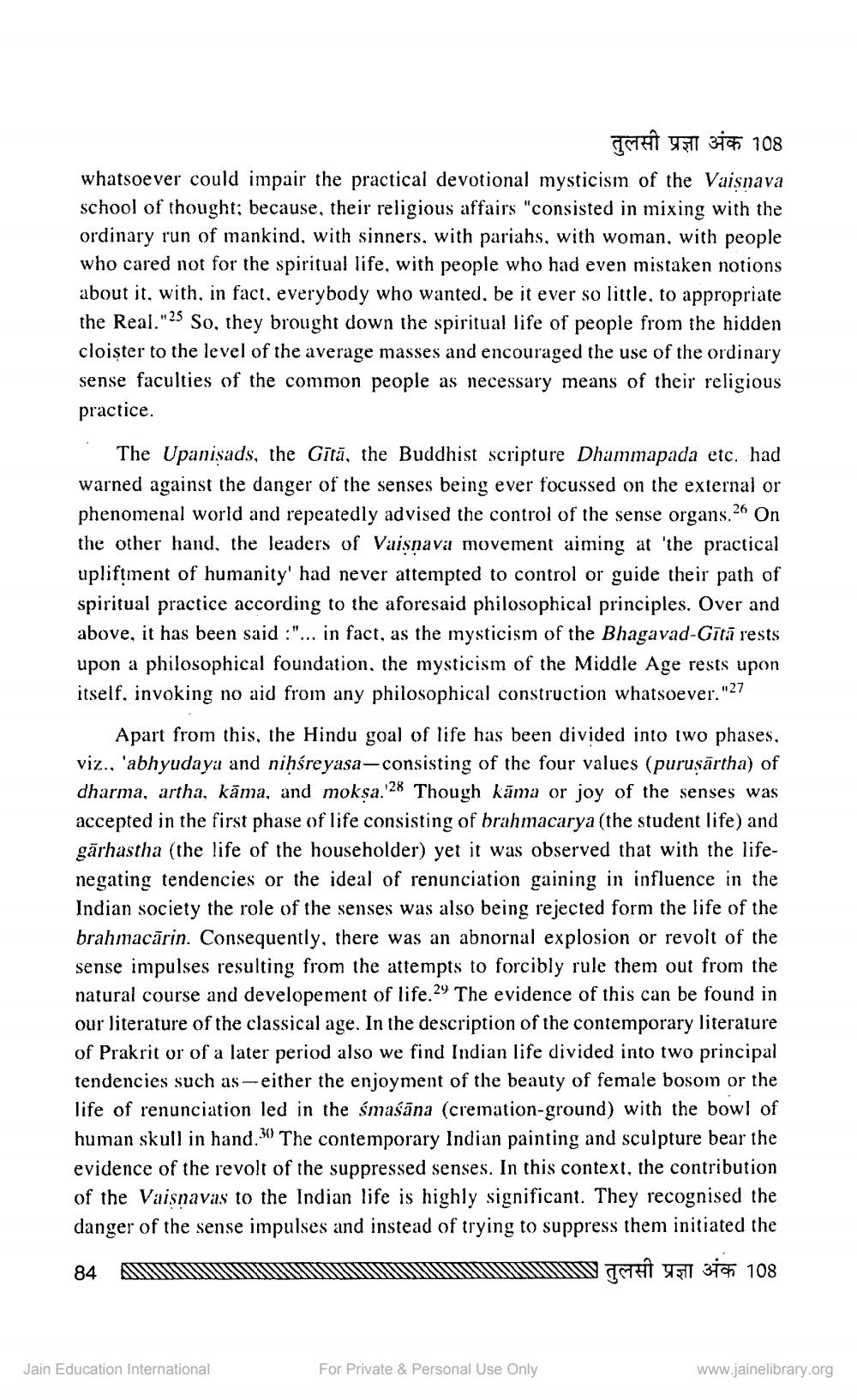________________
Tort 4511 310 108 whatsoever could impair the practical devotional mysticism of the Vaisnava school of thought; because, their religious affairs "consisted in mixing with the ordinary run of mankind, with sinners, with pariahs, with woman, with people who cared not for the spiritual life, with people who had even mistaken notions about it, with, in fact, everybody who wanted, be it ever so little, to appropriate the Real."25 So, they brought down the spiritual life of people from the hidden cloister to the level of the average masses and encouraged the use of the ordinary sense faculties of the common people as necessary means of their religious practice.
The Upanisads, the Gītā, the Buddhist scripture Dhammapada etc. had warned against the danger of the senses being ever focussed on the external or phenomenal world and repeatedly advised the control of the sense organs. 26 On the other hand, the leaders of Vaisnava movement aiming at 'the practical upliftment of humanity' had never attempted to control or guide their path of spiritual practice according to the aforesaid philosophical principles. Over and above, it has been said :"... in fact, as the mysticism of the Bhagavad-Gītā rests upon a philosophical foundation, the mysticism of the Middle Age rests upon itself, invoking no aid from any philosophical construction whatsoever."27
Apart from this, the Hindu goal of life has been divided into two phases, viz., 'abhyudaya and nihśreyasa-consisting of the four values (purusārtha) of dharma, artha, kāma, and moksa.'28 Though kāma or joy of the senses was accepted in the first phase of life consisting of brahmacarya (the student life) and gārhastha (the life of the householder) yet it was observed that with the lifenegating tendencies or the ideal of renunciation gaining in influence in the Indian society the role of the senses was also being rejected form the life of the brahmacārin. Consequently, there was an abnornal explosion or revolt of the sense impulses resulting from the attempts to forcibly rule them out from the natural course and developement of life.29 The evidence of this can be found in our literature of the classical age. In the description of the contemporary literature of Prakrit or of a later period also we find Indian life divided into two principal tendencies such as-either the enjoyment of the beauty of female bosom or the life of renunciation led in the smaśāna (cremation-ground) with the bowl of human skull in hand.) The contemporary Indian painting and sculpture bear the evidence of the revolt of the suppressed senses. In this context, the contribution of the Vaisnavas to the Indian life is highly significant. They recognised the danger of the sense impulses and instead of trying to suppress them initiated the 84 A L U ||||||||| |||||||||||||
W W W TETET 511 310 108
Jain Education International
For Private & Personal Use Only
www.jainelibrary.org




